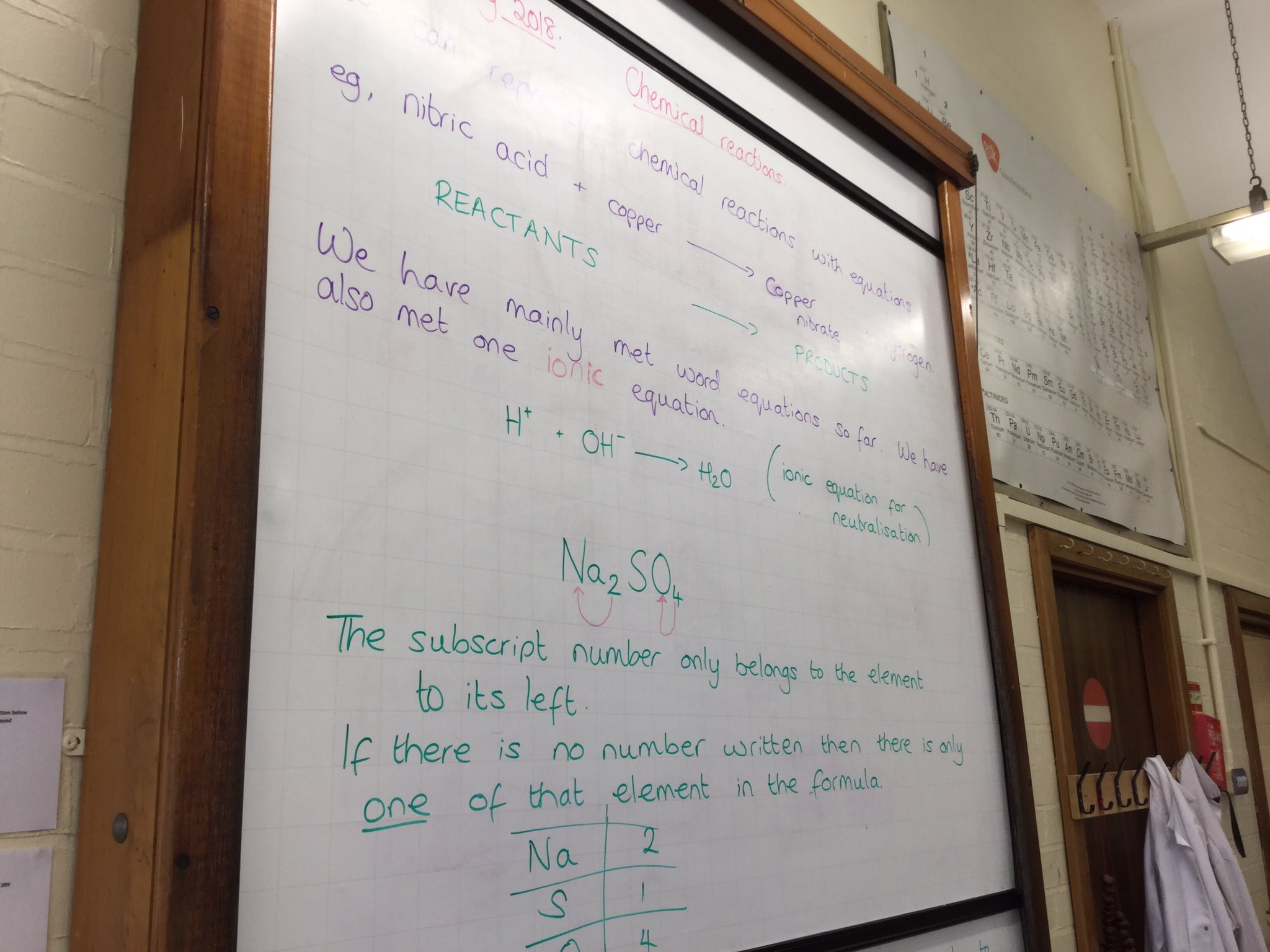Board work is not boring
I am a big fan of the white board and I’m not talking about the interactive kind or the A4 fridge magnet! I’m talking about this. Having read Daniel Willingham’s book – Why Don’t Students like School – I’m now starting to understand a little more about why it works.
Before I attempt to bestow the virtues of board work, it’s worth making the point that board work in itself will do nothing to help students learn. If I use the board to draw a picture of daffy duck, I can assure you students are going to learn very little about science (or about how to draw ducks!). But, if we use the whiteboard well, it can help us to do lots of other things that are important in helping students learn. Let me try to explain what I mean.
1. Support working memory
One challenge all students face is working memory overload. This is particularly relevant to science lessons where lots of new knowledge can be introduced quickly. Thinking about all this new information is hard, especially when it is presented on separate slides that make seeing connections problematic. The white board can provide a solution. Students can use the information stored on the board as a memory aid throughout the lesson to connect facts and help solve problems using just-learned knowledge. Just make sure you have a board big enough so you don’t need to erase as you go!
2. Improve teacher explanation by slowing thinking down
When I’m at the white board I am talking at the same time as drawing. Because I’m drawing I can’t go too fast. This gives me time to think about my explanations and consider the progression of a concept. It also gives students time to think. Imagine I wanted to explain osmosis. I could just put up a slide and talk through it. BANG – the novice is hit with an enormous number of parts to think about, working memory is struggling to cope. Or, I could slowly draw out each part e.g. begin with an outline of an animal cell, label the membrane, then add an outline of a beaker filled with water molecules and draw some more water molecules inside my cell, add a few solute particles and then pose some questions: where is the concentration of water highest, inside the cell or inside the beaker? Which direction will water move? What direction is the net movement of water molecules? The act of writing on the board encourages us to think carefully about clear explanations, where each idea is an elaboration of the one that came before it.
3. Model how to do something
Modelling is an incredibly powerful teaching technique. We have learnt many things in our lives from watching other people do something we can’t and the white board represents an ideal platform to do this in the classroom. Don’t just show a picture of a sodium chloride lattice, or a mathematical solution – show students how to construct these on the board and question around important steps to help students distinguish between the surface and deep structures of the problems. This will help students to ‘see’ your thought processes and provide important cues into the tacit knowledge that you may forget to mention if you simply press a button to show a slide.
4. Teach responsively working in real time with your students
Perhaps the biggest criticism of PowerPoint style lessons is they remove a lot of opportunity to teach responsively. A series of slides can become a weather show when we plough onto the next slide because it is there. Instead we need to pause, get to the white board and re-teach a concept or pose a question to check for understanding and provide the all important feedback. The white board is also a powerful tool to get students to show their thinking. Can they draw a reaction mechanism? What errors did they make? Let’s correct them before we move on.
And a word of caution …
It is worth pointing out that good board work relies on strong content and curricular knowledge. When we are teaching things for the first time, these areas are not always sufficiently developed, so tread carefully and don’t make the mistake of thinking board work means unprepared lessons. There is an entire instructional strategy in Japan dedicated around the organisation of the chalkboard known as “bansho” and this involves tonnes of preparation. Chalk and talk this is not!
So, make a pledge this week and teach one lesson ‘naked’; naked from the constraints of a slide deck and prove to yourself and your students that board work is not boring!
Further reading
Willingham, D. T. (2009). Why don’t students like school?: A cognitive scientist answers questions about how the mind works and what it means for the classroom. John Wiley & Sons.
